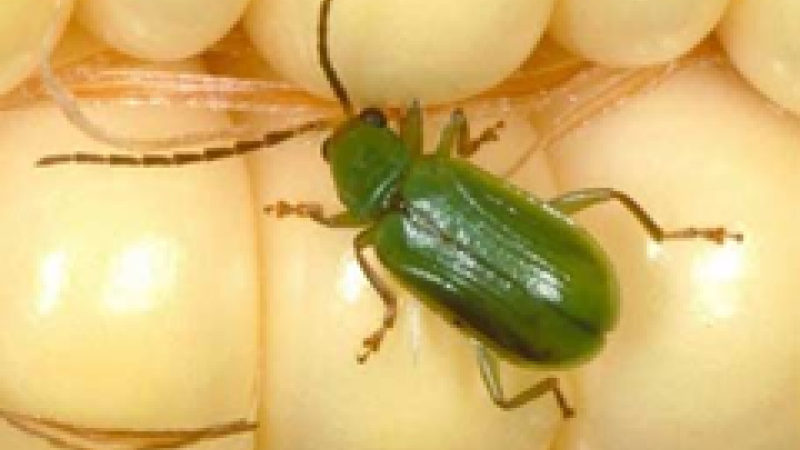Early April Corn vs. Late April Corn - Why heat units make a difference
Every planting season brings about different planting conditions. Several producers have made comments about late April (April 26th or later) planted corn coming up faster than corn planted around April 5th. People have asked if this is a difference between varieties? Why did the earlier planted corn take longer to emerge and seem to grow slower?
Some varieties are faster out of the ground, but this is not the reason some producers had slower emergence with corn planted in early April. This year we have had a cool spring. Corn like any other crop requires heat units also known as growing degree days (GDD) or growing degree units (GDU) to grow. The crops accumulate these GDD and reach the next growth stage as these heat units accumulate. For corn to emerge typically 100-150 GDD are required.
Looking at table 1, Manhattan and Parsons Kansas only accumulated 61-71 GDD and were 41-53 GDD less than average in the April 5th- April 26th time frame (3 weeks). Look at these same locations from April 26th-May 11th (2 weeks) there are 207-194 GDD accumulated; therefore, corn planted in this two-week timeframe accumulated more heat units in less time than corn planted in the early April timeframe. In fact, the later planted corn at Manhattan reaching 207 GDD already had some corn at V2 (two leaf) stage within this two-week timeframe. About 200 GDD are required for corn to reach V2 growth stage.
Depending on your planting date and location in the state you may be a little antsy about corn getting out of the ground or how slow it seems to be growing compared to fields planted later. Be patient since we have had a cool spring in most of the state. If you have further questions or concerns reach out to your local Hoegemeyer DSM or agronomist.
| April 5th |
- (3 Weeks) |
April 26th | April 26th |
- (2 Weeks) |
May 11th | |
| City | Avg. GDD | Avg. GDD | Difference | Avg. GDD | Avg. GDD | Difference |
|
Hiawatha Kansas |
140 |
160 |
-20 |
196 |
153 |
43 |
|
Manhattan Kansas |
61 |
114 |
-53 |
207 |
188 |
19 |
|
Parsons Kansas |
71 |
113 |
-41 |
194 |
190 |
5 |
Table 1. Growing Degree Days (GDD) accumulated in Northeast (Hiawatha), Central (Manhattan), and Southeast (Parsons) Kansas (K-state Mesonet ). Notice the GDD accumulated in 2 weeks (April 26th -May 11th) is more than double for both Manhattan and Parsons in the 3-week timeframe (April 5th - April 26th). For emergence to occur in corn 100-150 GDD are required.

